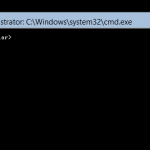
On a Linux server or VPS with cPanel/WHM, there are two ways to reset the root password for MySQL. One method uses the WHM admin web panel, while the other uses the command line (shell). Reset the MySQL root password in WHM On servers with cPanel/WHM, it is recommended to change the MySQL root password […]






![Permalink to Synchronize Time with NTP on Windows Server or VPS [How to]](https://www.solvps.com/blog/wp-content/uploads/2015/07/windows10-vps-screenshot-1-150x150.jpg)

![Permalink to Removing Roles/Features from Windows Server 2012 R2 [How To]](https://www.solvps.com/blog/wp-content/uploads/2015/10/Screen-Shot-2015-10-02-at-11.54.57-AM-150x150.png)



